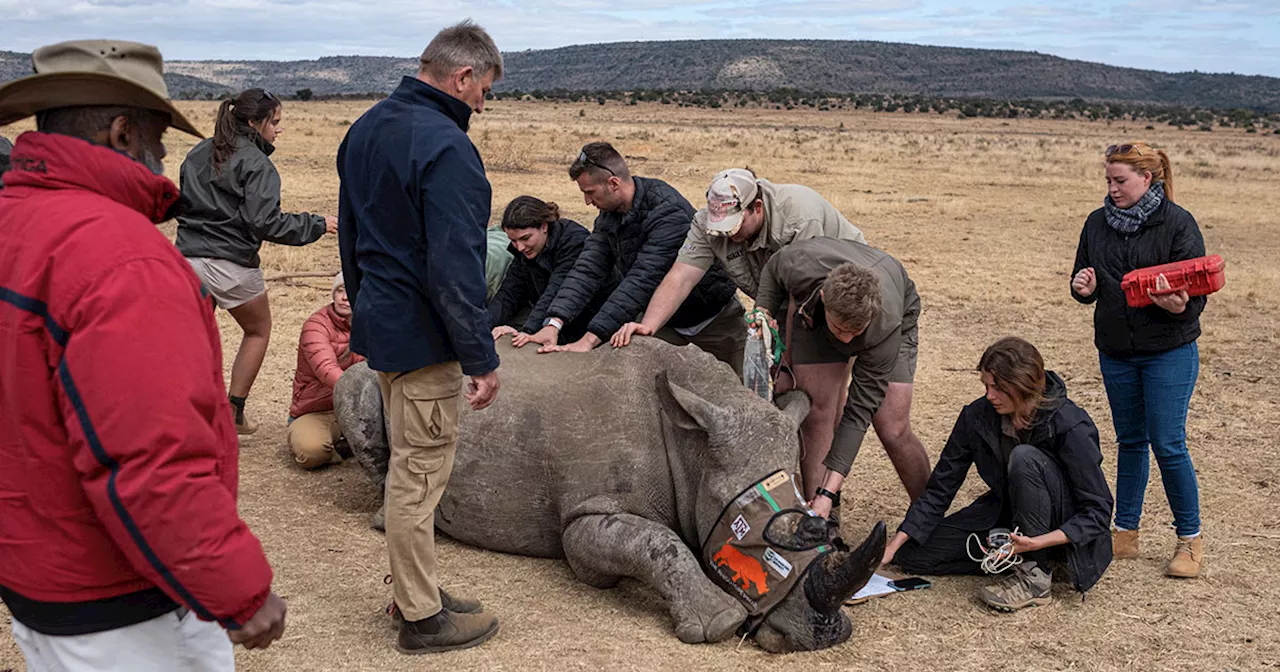Science and Technology News and Videos
In an effort to make them useless to poachers, researchers are implanting radioactive isotopes into the horns of rhinos in South Africa.
The unusual material would "render the horn useless... essentially poisonous for human consumption," James Larkin, professor and dean of science at the University of the Witwatersrand in Johannesburg, The isotopes would also be "strong enough to set off detectors that are installed globally," Larkin added, referring to hardware that was originally installed to "prevent nuclear terrorism."
And in case you're wondering, the "two tiny little radioactive chips in the horn" pose no risks to the animals' health or the local environment, making it an elegant solution to a very real problem., 499 rhinos were known to have been killed in 2023, representing an 11 percent increase over 2022. While three species of rhinos remain, white rhinos in Africa have fortunately made a remarkable recovery after once thought to be extinct, largely thanks to conservation efforts.
Indonesia Berita Terbaru, Indonesia Berita utama
Similar News:Anda juga dapat membaca berita serupa dengan ini yang kami kumpulkan dari sumber berita lain.
 Live rhino horns injected with radioactive material in project aimed at curbing poaching in South AfricaSouth Africa is home to a large majority of the world's rhinos and as such is a hot spot for poaching driven by demand from Asia.
Live rhino horns injected with radioactive material in project aimed at curbing poaching in South AfricaSouth Africa is home to a large majority of the world's rhinos and as such is a hot spot for poaching driven by demand from Asia.
Baca lebih lajut »
 Fukushima’s Lingering Mystery: Scientists Conduct First-Ever Imaging of Radioactive CesiumScience, Space and Technology News 2024
Fukushima’s Lingering Mystery: Scientists Conduct First-Ever Imaging of Radioactive CesiumScience, Space and Technology News 2024
Baca lebih lajut »
 Scientists develop fatigue-free ferroelectric materialResearchers at the Ningbo Institute of Materials Technology and Engineering (NIMTE) of the Chinese Academy of Sciences, in collaboration with research groups from the University of Electronic Science and Technology of China and Fudan University, have developed a fatigue-free ferroelectric material based on sliding ferroelectricity.
Scientists develop fatigue-free ferroelectric materialResearchers at the Ningbo Institute of Materials Technology and Engineering (NIMTE) of the Chinese Academy of Sciences, in collaboration with research groups from the University of Electronic Science and Technology of China and Fudan University, have developed a fatigue-free ferroelectric material based on sliding ferroelectricity.
Baca lebih lajut »
 * Hard Yet Stretchable: Scientists Create “Unbreakable” New MaterialScience, Space and Technology News 2024
* Hard Yet Stretchable: Scientists Create “Unbreakable” New MaterialScience, Space and Technology News 2024
Baca lebih lajut »
 First radioactive rhino horns to curb poaching in S.AfricaSouth African scientists on Tuesday injected radioactive material into live rhino horns to make them easier to detect at border posts in a pioneering project aimed at curbing poaching.
First radioactive rhino horns to curb poaching in S.AfricaSouth African scientists on Tuesday injected radioactive material into live rhino horns to make them easier to detect at border posts in a pioneering project aimed at curbing poaching.
Baca lebih lajut »
 Radioactive isotopes trace hidden Arctic currentsThe Arctic Ocean is warming four times faster than the rest of the world's oceans, a trend that could potentially spill over to the rest of the world in the form of altered weather patterns and other climate consequences.
Radioactive isotopes trace hidden Arctic currentsThe Arctic Ocean is warming four times faster than the rest of the world's oceans, a trend that could potentially spill over to the rest of the world in the form of altered weather patterns and other climate consequences.
Baca lebih lajut »
